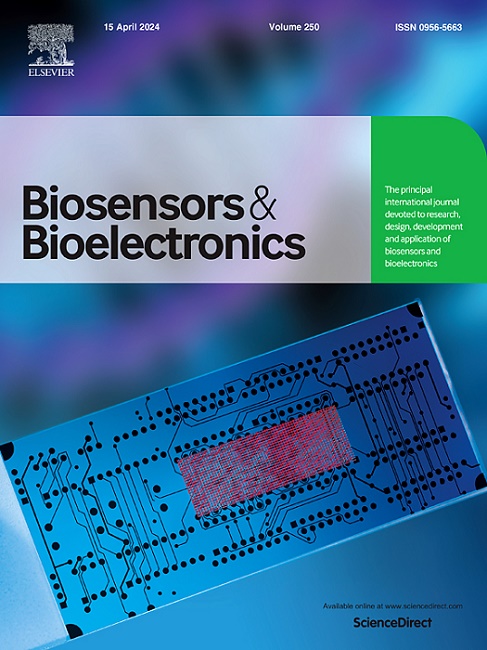基于生物传感器的外泌体检测方法及其在疾病诊断中的应用
IF 10.5
1区 生物学
Q1 BIOPHYSICS
引用次数: 0
摘要
外泌体是由大多数真核细胞分泌的纳米级细胞外囊泡(ev),几乎可以在所有人体体液中发现。越来越多的证据表明,它们在细胞间通讯中起着关键作用,并积极参与各种生理和病理活动。外泌体的功能依赖于其与亲本细胞生物学特性密切相关的内容,这可能为多种疾病的准确和详细诊断提供丰富的分子信息资源,如阿尔茨海默病的鉴别诊断、各种肿瘤的早期发现和分型。生物传感器作为一类灵敏的检测设备,可以充分揭示分子信息,并将其转化为可操作的临床信息。本文综述了近年来基于生物传感器的外泌体检测方法的研究进展。我们描述了各种基于分析外泌体蛋白、rna或聚糖的准确诊断的生物传感器的制造,以及它们精心设计的识别设计、信号放大策略、传感特性及其应用潜力。讨论了这些生物传感器在未来发展和临床转化中所面临的挑战以及相应的技术。本文章由计算机程序翻译,如有差异,请以英文原文为准。
Biosensor-based methods for exosome detection with applications to disease diagnosis
Exosomes are nanoscale extracellular vesicles (EVs) secreted by most eukaryotic cells and can be found in nearly all human body fluids. Increasing evidence has revealed their pivotal roles in intercellular communication, and their active participation in myriad physiological and pathological activities. Exosomes' functions rely on their contents that are closely correlated with the biological characteristics of parental cells, which may provide a rich resource of molecular information for accurate and detailed diagnosis of a diverse array of diseases, such as differential diagnosis of Alzheimer's disease, early detection and subtyping of various tumors. As a category of sensitive detection devices, biosensors can fully reveal the molecular information and convert them into actionable clinical information. In this review, recent advances in biosensor-based methods for the detection of exosomes are summarized. We have described the fabrication of various biosensors based on the analysis of exosomal proteins, RNAs or glycans for accurate diagnosis, with respect to their elaborate recognition designs, signal amplification strategies, sensing properties, as well as their application potential. The challenges along with corresponding technologies in the future development and clinical translation of these biosensors are also discussed.
求助全文
通过发布文献求助,成功后即可免费获取论文全文。
去求助
来源期刊

Biosensors and Bioelectronics
工程技术-电化学
CiteScore
20.80
自引率
7.10%
发文量
1006
审稿时长
29 days
期刊介绍:
Biosensors & Bioelectronics, along with its open access companion journal Biosensors & Bioelectronics: X, is the leading international publication in the field of biosensors and bioelectronics. It covers research, design, development, and application of biosensors, which are analytical devices incorporating biological materials with physicochemical transducers. These devices, including sensors, DNA chips, electronic noses, and lab-on-a-chip, produce digital signals proportional to specific analytes. Examples include immunosensors and enzyme-based biosensors, applied in various fields such as medicine, environmental monitoring, and food industry. The journal also focuses on molecular and supramolecular structures for enhancing device performance.
 求助内容:
求助内容: 应助结果提醒方式:
应助结果提醒方式:


